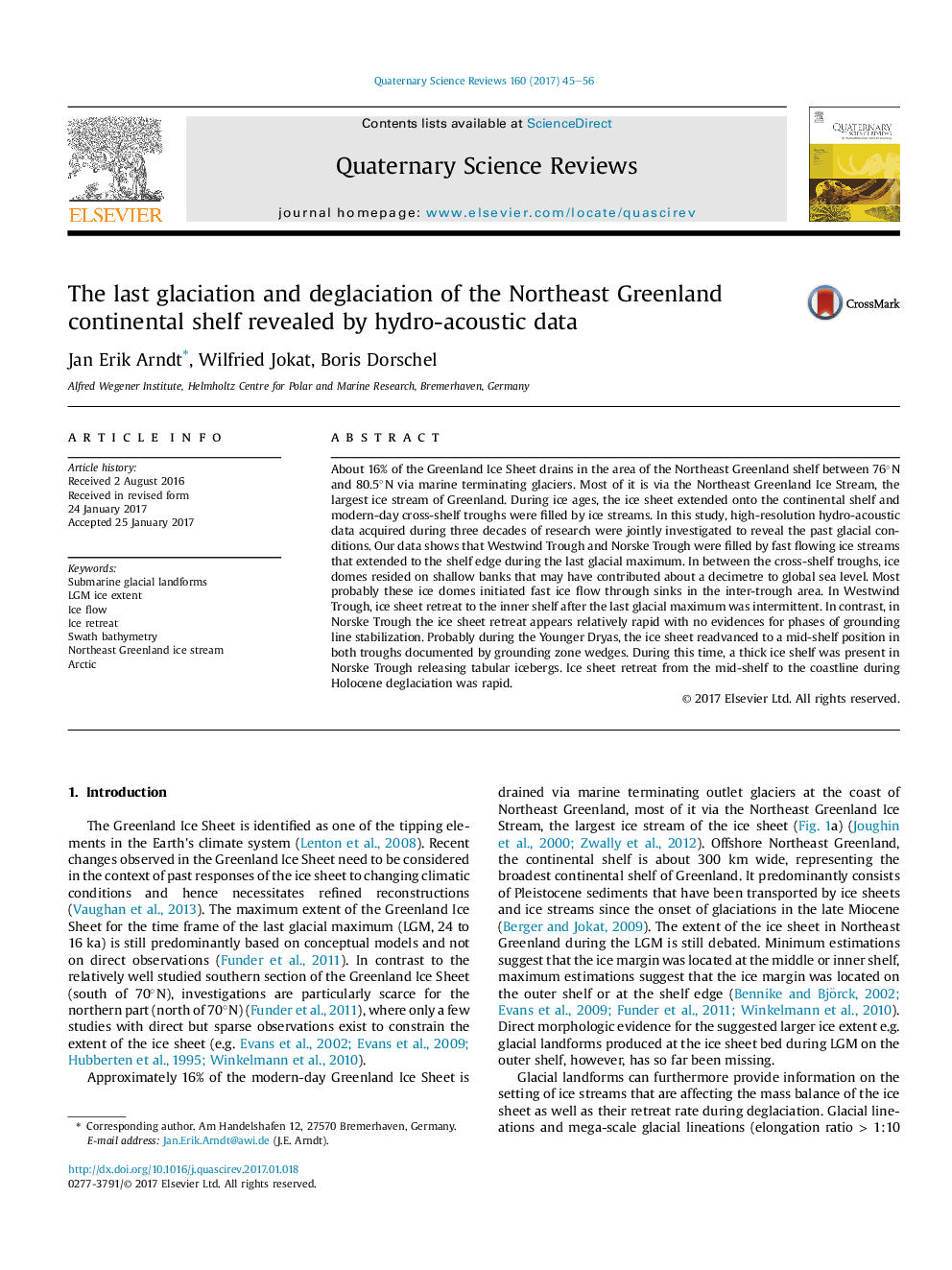| Article ID | Journal | Published Year | Pages | File Type |
|---|---|---|---|---|
| 5786684 | Quaternary Science Reviews | 2017 | 12 Pages |
Abstract
About 16% of the Greenland Ice Sheet drains in the area of the Northeast Greenland shelf between 76°N and 80.5°N via marine terminating glaciers. Most of it is via the Northeast Greenland Ice Stream, the largest ice stream of Greenland. During ice ages, the ice sheet extended onto the continental shelf and modern-day cross-shelf troughs were filled by ice streams. In this study, high-resolution hydro-acoustic data acquired during three decades of research were jointly investigated to reveal the past glacial conditions. Our data shows that Westwind Trough and Norske Trough were filled by fast flowing ice streams that extended to the shelf edge during the last glacial maximum. In between the cross-shelf troughs, ice domes resided on shallow banks that may have contributed about a decimetre to global sea level. Most probably these ice domes initiated fast ice flow through sinks in the inter-trough area. In Westwind Trough, ice sheet retreat to the inner shelf after the last glacial maximum was intermittent. In contrast, in Norske Trough the ice sheet retreat appears relatively rapid with no evidences for phases of grounding line stabilization. Probably during the Younger Dryas, the ice sheet readvanced to a mid-shelf position in both troughs documented by grounding zone wedges. During this time, a thick ice shelf was present in Norske Trough releasing tabular icebergs. Ice sheet retreat from the mid-shelf to the coastline during Holocene deglaciation was rapid.
Related Topics
Physical Sciences and Engineering
Earth and Planetary Sciences
Geology
Authors
Jan Erik Arndt, Wilfried Jokat, Boris Dorschel,
